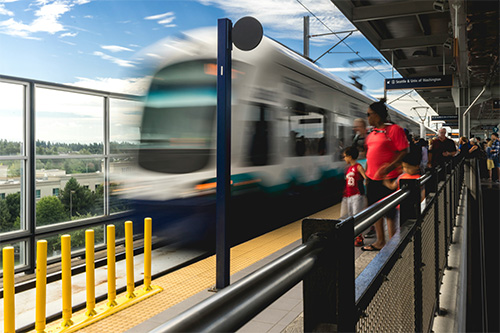Project leads: Mark Hallenbeck, [Retired] Director of the Washington State Transportation Center (TRAC), University of Washington, and Ryan Avery, Deputy Director of the Washington State Transportation Center (TRAC), University of Washington.
Data scientist: Bryna Hazelton, eScience Institute, University of Washington.
DSSG fellows: Himanshu Naidu, Ishan Saksena, Rebecca Hayes, Siman Ning.
Click here for participant bios.
Transit service is a public good, and quality service for all transit users, especially transit-dependent populations, is essential for improving access to opportunities. Transit agencies typically lack knowledge about transit usage patterns. Understanding current gaps and inequities in service can help transit agencies improve service, encourage increased use, and reduce environmental impacts. Transit fare card data describes actual transit use. Its analysis allows assessment of the equity of the existing transit system, can describe gaps in services being provided, illustrate specific locations where effective improvements need to be made, and identify changes in route structure that would better serve riders.
Fare card data is a form of trace data which can be used to identify individuals and their movements through time and space. This project will access and analyze fare card data from the ORCA system—the regional electronic payment system used by transit agencies throughout the Puget Sound region in Washington State. ORCA is a massive and sensitive dataset that allows for analysis of large numbers of people over multiple months. ORCA has specific classes of fare cards, allowing for identification and analysis of trip characteristics for specific types of priority transit users such as users with subsidized passes due to low-incomes or disabilities (e.g., frequency and number of trips and transfers, wait time for transfers, type routes used). By examining actual transit use of anonymized riders against geographic and demographic characteristics, we can identify where transit system improvements need to be made (e.g., new routes to better serve important movements, changed route structures to lower transfer times, transit stop improvements such as shelters where many people transfer) to improve the quality of services being provided, with emphasis on demographic populations most dependent on transit.
Learn more on the project website. Watch the presentation here, or the full recording of all 2024 team presentations here.

